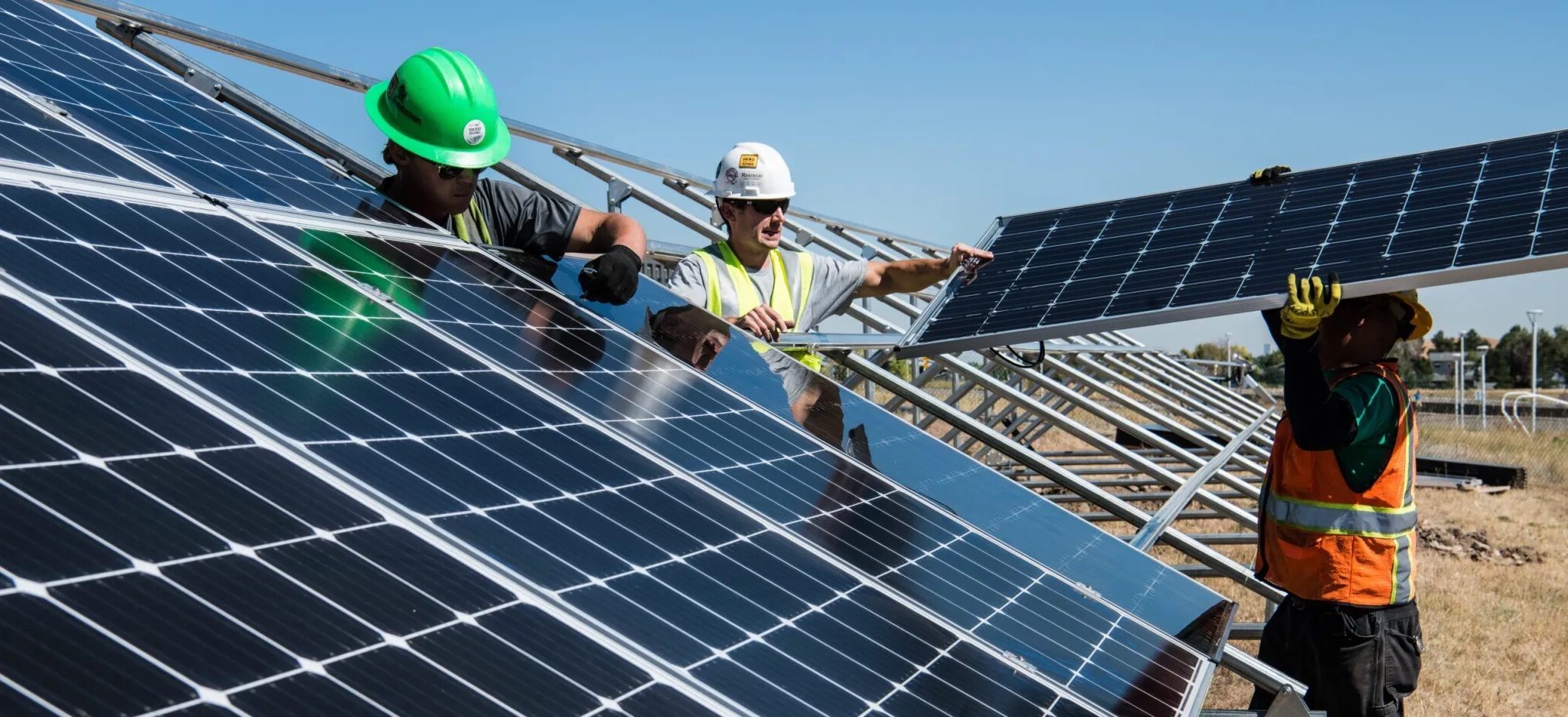
Fact Sheet
Community Solar
Overview
Solar energy has gained momentum across the United States, but it is still inaccessible to a large portion of the population. Community solar provides those who face significant barriers to owning rooftop solar, such as low-income communities, renters, and businesses, to reap the benefits of solar power. When subscribed to a community solar project, the local shared solar farm feeds energy into the local electricity grid. Community solar subscribers continue to receive power from their utility provider along with a credit on their utility bill that is based on the energy generated from the solar farm. Over 40 states have at least one community solar project. Community solar makes way for affordable, locally generated, clean energy without panel installation or costly fees. Community solar makes way for affordable, locally generated, clean energy without panel installation or costly fees.
Key Points
Key Point 1
Community solar offers the benefits of solar power to those who do not have access to solar panels on their homes. (Solar United Neighbors)
Key Point 2
Depending on the state, community solar programs vary significantly in size, scope and goals, allowing state legislators to tailor programs to their communities. (Green Tech Media)
Key Point 3
Virtual Net Metering (VNM) makes a way for those who are not eligible for rooftop solar to receive the benefits of solar energy. VNM and similar policies permit households to receive the net metering credits that are generated with a renewable energy project in a neighboring location. (EnergySage)
Key Point 4
States can drive better access to solar by allocating a certain percentage of all community solar projects to low- and moderate-income households. (Clean Energy States Alliance)
Legislation/ State Options
- California A.B.2316 (enacted 2022): revamped California’s community solar program by: requiring at least 51 percent of subscribers for each project to be low-income; requiring projects to be built by workers paid prevailing wages; paying community solar production based on the avoided-cost calculator to incentivize battery storage; and requiring projects to be connected to the distribution grid, rather than the bigger transmission network, to advance local resilience.
- Colorado S.B.21-261 (enacted 2021): allowed virtual net metering, a system that would enable owners of multiple properties to offset one property’s energy bills with the on-site generation from another property.
- New Mexico S.B 84 (enacted 2021): enacted a community solar program and the Native Community Solar Project, a community solar site that is owned or operated by an Indian nation, tribe or pueblo in partnership with a third-party entity.
- Maryland H.B.0908 (enacted 2023): made permanent the Community Solar Energy Generating Systems Pilot Program; required a community solar energy generating system to serve at least 40% of its kilowatt-hour output to low-income and moderate-income subscribers.

Empower State Environmental Champions
Your donation funds the fight for equitable actions that protect the environment and our health.
Donate